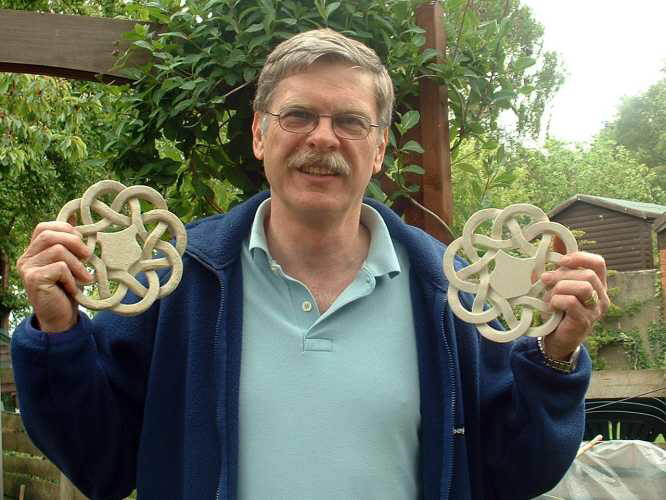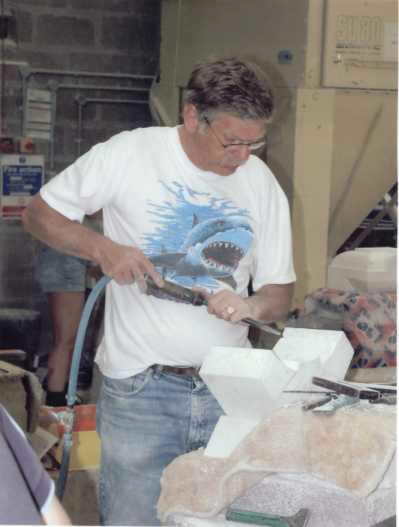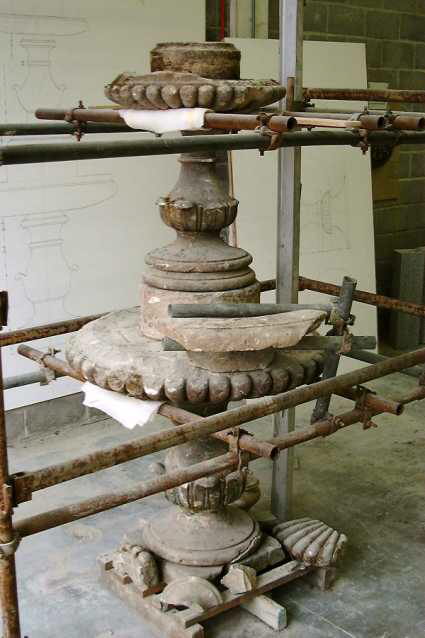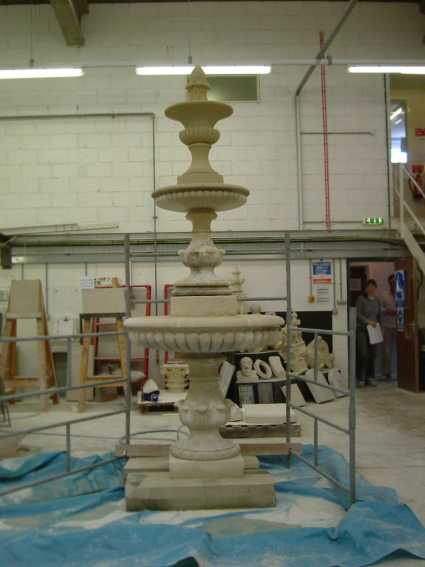A Chip off the Old Block
by Karen Pereczes

When Hugh Sawyer was offered early retirement from his job of 38 years in the Civil Service, he took the opportunity to enrol at college to learn something new. Following in the footsteps of his ancestors, he decided to study the traditional skill of stonemasonry...
Inspired
by a Celtic knot stone carving he had inherited from his great uncle Albert, a
stonemason who died in 1959, he explains: "The piece had been passed on
through the family over the years. It was so intricate that I was frightened to even hold it in
case it broke, and so I just stored it safely away and forgot about it.
"The idea of carving stone never entered my head until I retired. I don't know when the 'Eureka!' moment really hit me, but I had the idea that I would like to make a twin of the Celtic knot and found out that Bath College ran a stonemasonry course. I paid them a visit and, once I had seen them in action, I knew that I'd found my destiny."
Oddly enough, Hugh's surname
- Sawyer - is
actually one of the stonecraft occupations. This is the name for the craftsman
who uses saws to cut huge stone blocks down to usable sizes. Although
originally this was a task done by hand, this is now achieved mechanically.
"I don't envy the old
hands," Hugh sympathises, "I've tried it and it's hard graft and a
long, slow process!"
For Hugh, working with stone has even deeper family
connections. Hugh's grandfather, Frank Sawyer, was a builder who ran a
family business - F.Sawyer & Sons - from the village of Box in
Wiltshire during the Victorian era.
Box is home to the largest stone mine in the country, running for approximately 30 miles of interconnecting passages. Here are quarries of freestone (also called 'Bath stone' from being extensively used in the city) - long renowned worldwide for its excellent building properties. Hugh remembers:
"As
a boy, I lived on Quarry Hill in Box. Against my parents' warnings, I loved to go into the
old mine entrances to explore. I was fascinated by these warrens - like
snapshots in time linking back to the original miners, with countless drawings
on the walls and graffiti from another era. Luckily, unlike some of my
friends and younger brother, I didn't get lost!"
The mines evolved in a haphazard manner and, incredibly, pass over the top of Isambard Kingdom Brunel's famous railway tunnel through Box Hill, which was created in 1841. Reputedly, Hugh's ancestors used bricks that were surplus from the building of the tunnel to build Valens Terrace in Box.
The process of both mining and quarrying is extremely
impressive. Massive blocks of stone are cleaved from the earth, and have
provided the raw material for the beautiful architectural features throughout
the country.
"This is a difficult process - even with the machinery available today," explains Hugh. "Think what it must have been like in the old days, with pickaxes and handsaws!"
Following the College
syllabus, Hugh started by
carving masonry pieces of set design in both Bath and Portland stone. As a
side venture he tried his hand at ornamental and letter carving as well as
successfully replicating his great uncle's Celtic knot.

Hugh at college
"I enjoyed gaining the
stonemason's skills, although
at my age taking written tests was a bit gruelling!" Hugh grimaces.
"I never went to college or university as a youth, and I liked
the atmosphere of learning in an environment where you are given respect."
Hugh left college with an NVQ qualification and has
since joined forces with one of his fellow-students, Marcus Mitchell to work
on stone-carving projects including several fireplaces. Says Hugh:
"Our most impressive achievement has been the
re-building of a gable-end in Bath stone, which had been dramatically
demolished by a fierce storm. The challenge was to replicate exactly the
contours of the mouldings of the coping-stones, and to re-erect it as an
identical copy of the original.
"Having your handiwork so impressively on display to the world is very satisfying, and gives a great sense of achievement - although when comparing it to some of the work I have seen in churches and ancient buildings, it is quite humbling. I find myself looking up at building structures much more now which, when accompanying my wife on shopping expeditions in Bath, can be quite distracting!"
Further
information:
Contact
Hugh Sawyer: (01225) 709334.

